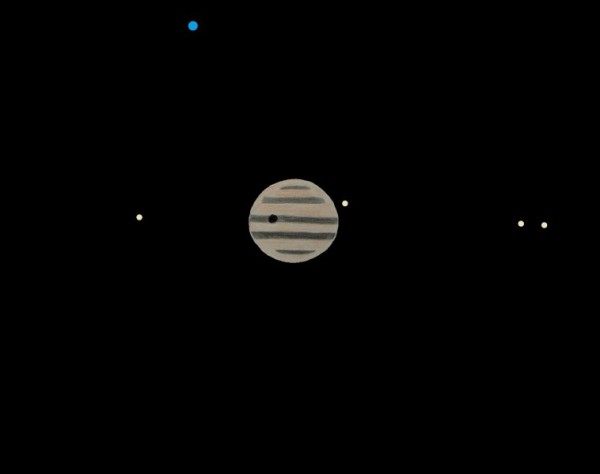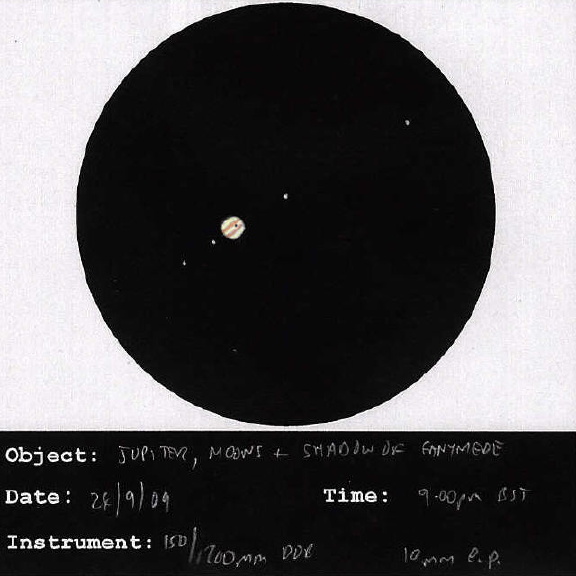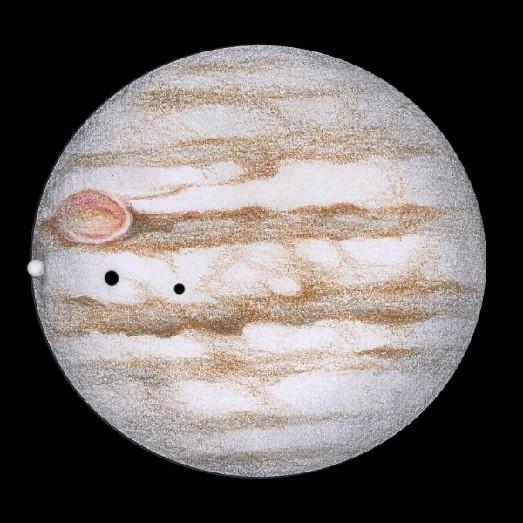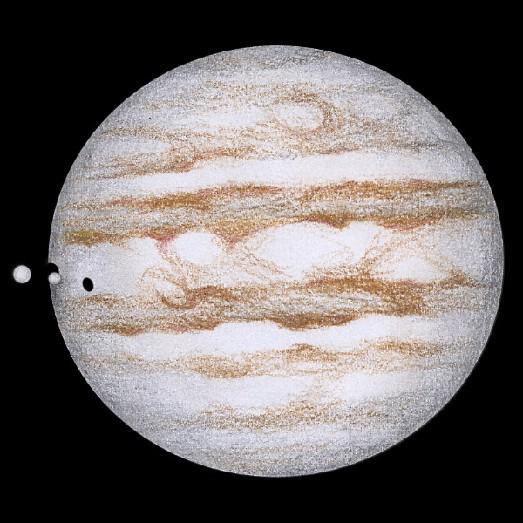Object Name: Jupiter
Object Type: planet
Location: Itajobi – SP – Brazil
Date: 2010, July 20th
Time: 04h30min – U.T.
Media: colored pencil on white paper, photographed with Sony Cybershot 4.1MP (Carls Zeiss lens), edited with Paint.
Telescope: reflecting 180mm f/D=6 (dobsonian)
Eyepieces: SP 32mm (34x); Plossl 10mm (108x); SP 6mm (180x)
Observer: Rodrigo Pasiani Costa
Extra information:
That was a cloudy, cold night – for us, Brazilian people – around 12ºC. I had just aligned my mirrors and wanted to test the collimation. After one hour observing the moon through dark clouds, I saw the best picture of Jupiter ever (through my telescope) that night. Even through the 32mm eyepiece I could see two dark stripes crossing the giant planet, which was surrounded by its four brighest moons. Through the 10mm I got my best view, like the sketch. The 6mm eyepiece showed a low-resolution, distorted image. No filter used. I’d like to thank to Gabriel Piani Luna da Silva, that helped me with the telescope that afternoon, and also lent his backyard that night. It was his first time observing Jupiter, and he got impressed. I couldn’t forget to thank his mother, who gave us a delicious cake that afternoon, while we were fixing the telescope mounting. This is my first Jupiter sketch, I hope you enjoy it.
Best regards and clear skies to everybody,
Rodrigo Pasiani Costa






